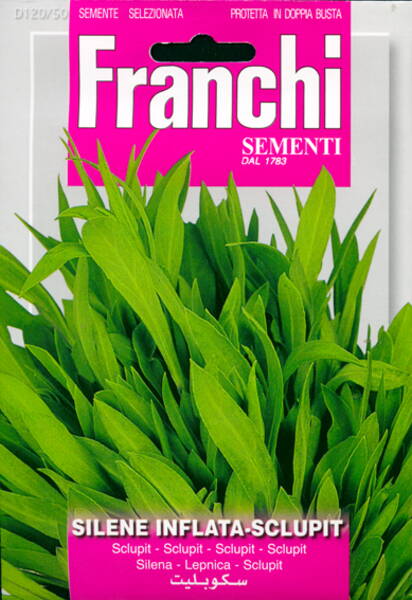Perennial aromatic herb to flavor salads, egg dishes, risotto. Young leaves and shoots are commonly cooked or eaten raw in salads (they have a sweet, slightly bitter flavor) - that adds a fresh bite.
Flavor a bit like a combination of arugula, tarrogon, chicory and other kitchen herbs.
Easy to grow. Direct seed from last frost date to early summer.
NB: not to be confused with Silene latifolia!
Silene inflata (or Silene vulgaris) is a perennial herbaceous plant 40-100 cm high, naked, with an erect stem. The leaves are lanceolate or ovate-lanceolate, bluish-green in color, up to 10 cm long and up to 30 mm wide (the lower ones are narrowed into a short petiole).
Flowers on short stalks. Calyx swollen, glabrous, 13-18 mm long and 7-10 mm wide, with 20 veins. Petals 1.5-2 times longer than the sepals, white, with a dissected limb. The fruit is a globular capsule. Blossoms in June-September, bears fruit from July. Roots short, not branched. Easily pulled out of the ground.
The tender leaves can be eaten raw in salads. Old leaves are usually eaten boiled or fried, fried with garlic, and also added to scrambled eggs.
Young shoots and leaves of Bladder campion are used in the cuisine of the countries of the Mediterranean region.
Eng.: Maidenstears, Bladder campion. Bot. syn.: Silene cucubalus, Silene vulgaris, Silene behen (L.) Ikonn.












